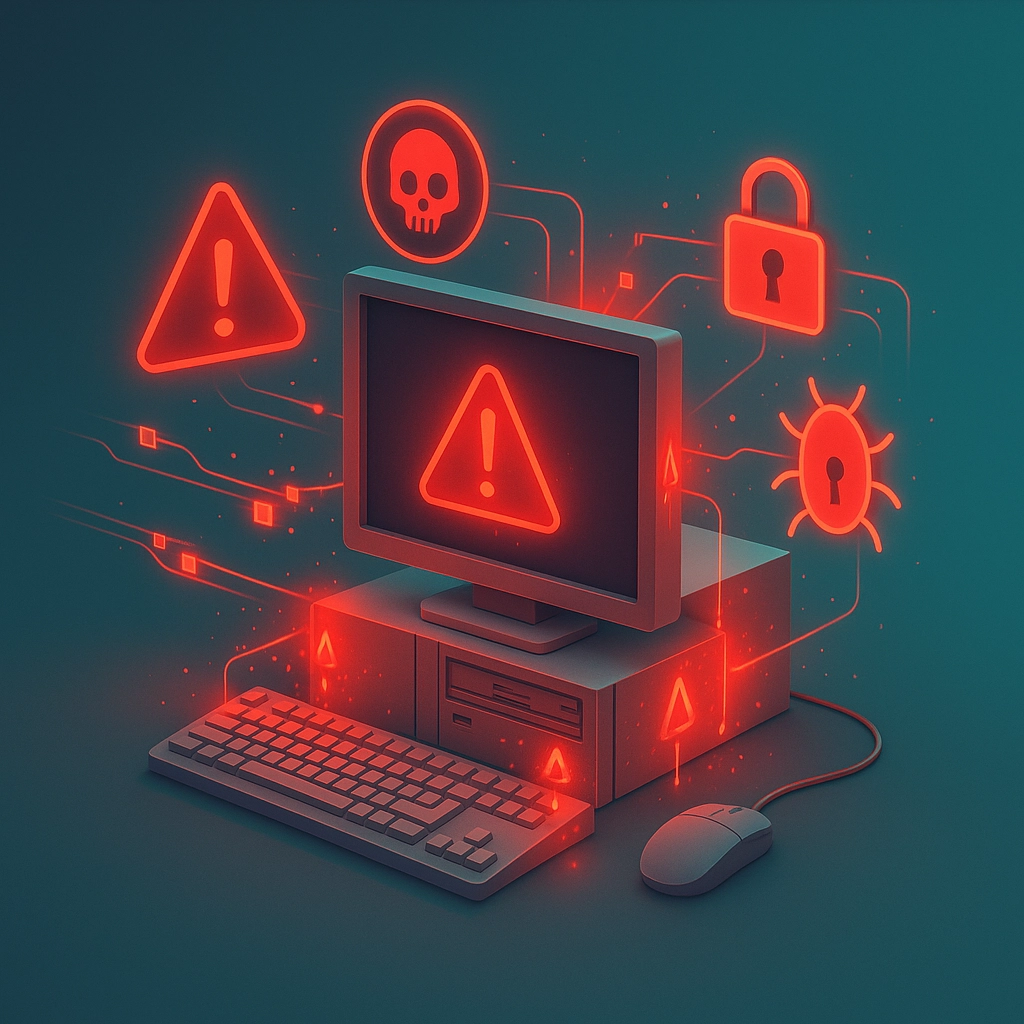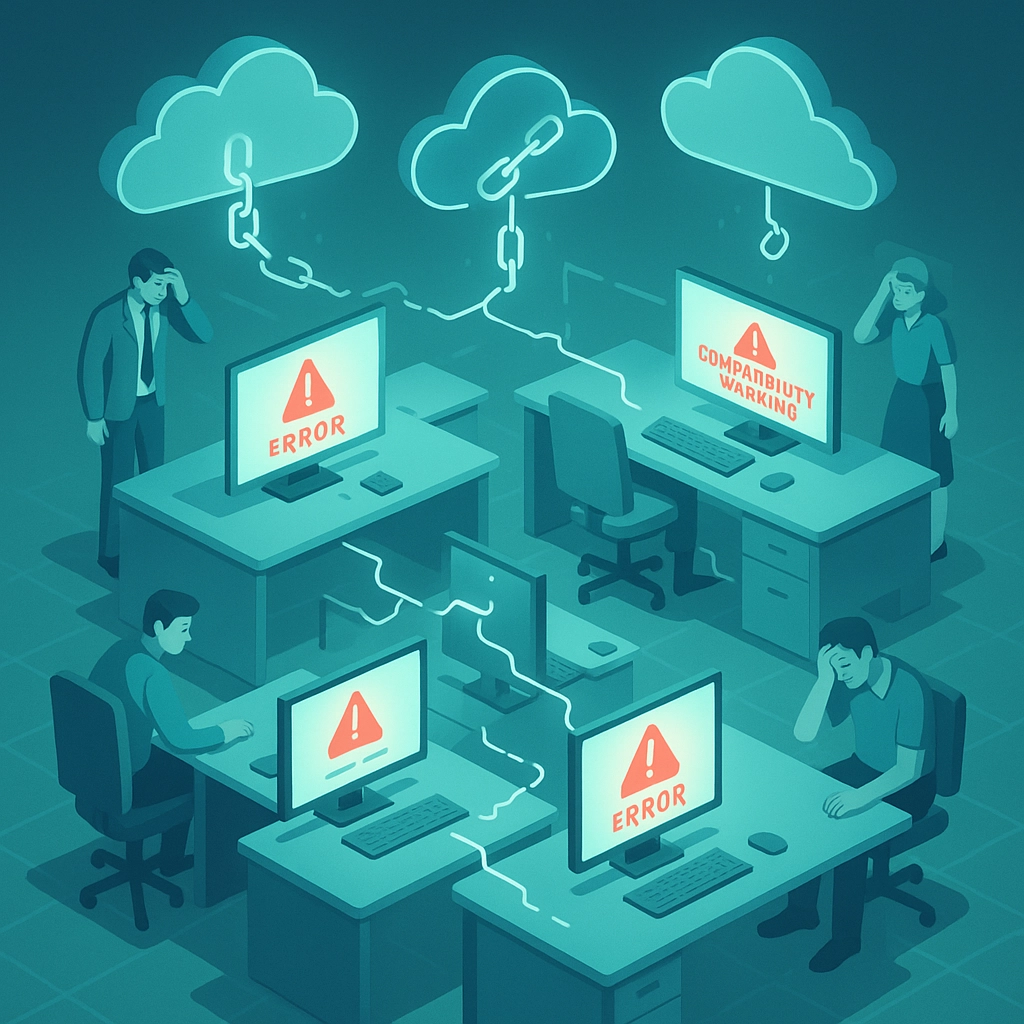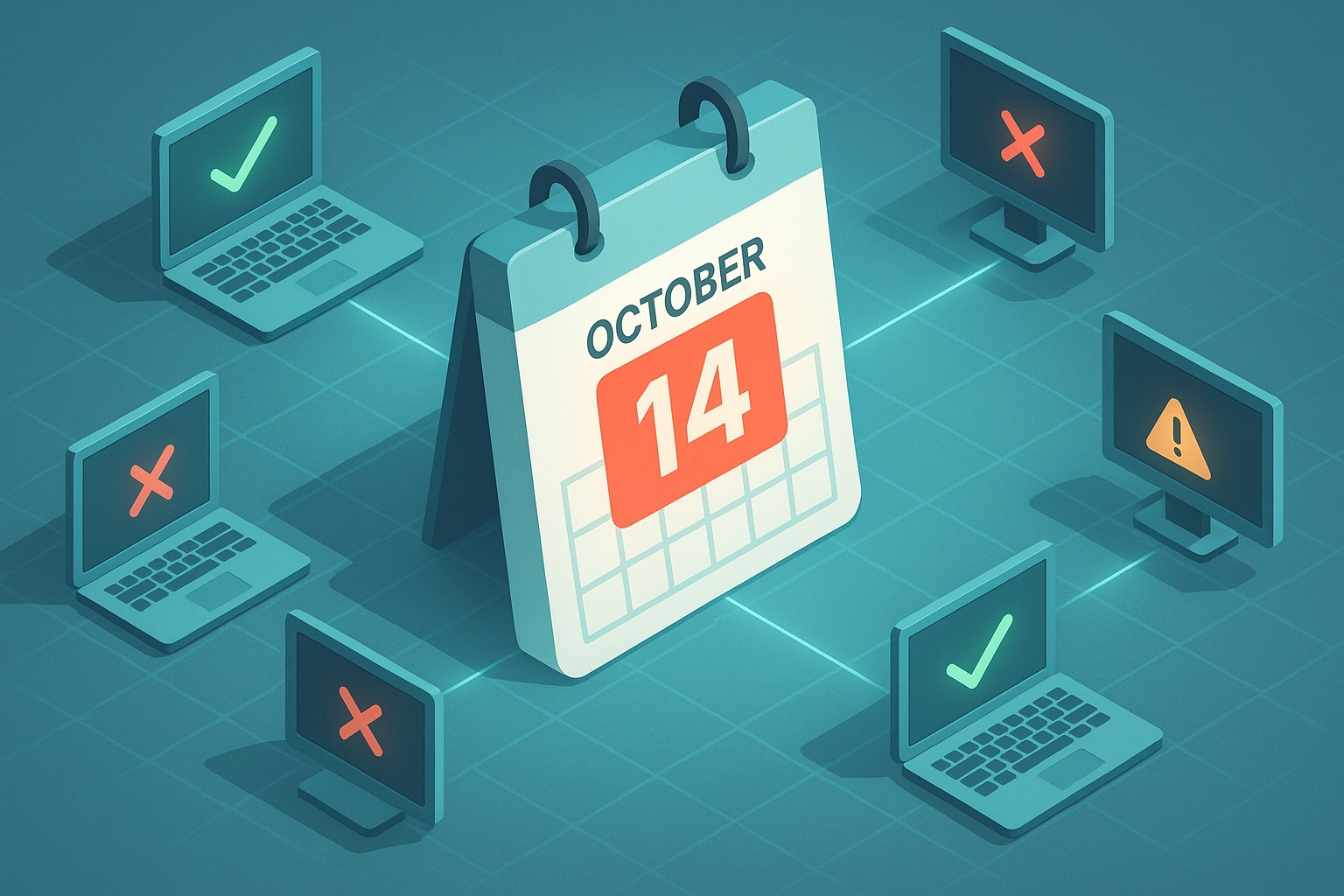Time's running out faster than you think. We're just 36 days away from October 14th, 2025: the day Microsoft officially pulls the plug on Windows 10 support. If your business is still running computers that can't upgrade to Windows 11, you're not just facing an inconvenience. You're staring down a cybersecurity nightmare that could cost you everything.
Let me be straight with you: this isn't another "upgrade when you get around to it" situation. This is a hard deadline that will fundamentally change your risk profile overnight.
The Security Reality Check You Can't Ignore
Here's what happens on October 15th, 2025: Every Windows 10 machine in your office becomes a walking security vulnerability. No more patches. No more fixes. No more protection against newly discovered threats.
Think about that for a moment. Every day after October 14th, hackers will discover new ways to exploit Windows 10 systems. And Microsoft won't lift a finger to help you stop them.
We've seen this movie before. When Windows XP support ended in 2014, systems running the outdated OS became prime targets for cybercriminals. The same pattern will repeat with Windows 10, except this time, the stakes are higher. Today's cyber threats are more sophisticated, more automated, and more damaging than they were a decade ago.

Your antivirus software can only do so much when the operating system itself has gaping security holes. It's like trying to protect a house with a great security system while leaving the front door wide open.
The Business Continuity Disaster Waiting to Happen
Running unsupported Windows 10 systems isn't just a security risk: it's a business continuity time bomb. Here's what you're really gambling with:
Software Compatibility Issues: New business applications and updates will stop supporting Windows 10. Your accounting software, CRM system, and other critical tools will eventually refuse to run on your outdated machines. When that happens, you'll face a choice: upgrade immediately under pressure or lose access to essential business functions.
Cloud Service Integration Problems: Microsoft 365, Google Workspace, and other cloud platforms will gradually phase out Windows 10 compatibility. Your team's ability to collaborate and access cloud-based tools will deteriorate over time.
Vendor Support Nightmares: When something breaks on a Windows 10 system, good luck finding help. Software vendors will point to the unsupported OS, and your IT support team will struggle to troubleshoot systems running on deprecated technology.
Why the "Just Pay for Extended Support" Strategy Is a Trap
I know what you're thinking. "Can't I just pay Microsoft for extended security updates and buy myself some time?"
Here's the brutal truth: Microsoft's Extended Security Updates (ESU) program has severe limitations. It's primarily designed for enterprise customers with very specific licensing arrangements. For most small and medium businesses, extended support either isn't available or costs significantly more than you'd expect.
Even if you can access extended support, you're essentially paying to maintain increasingly obsolete technology. It's like paying premium prices for repairs on a 15-year-old car instead of buying a reliable new one.

The smart money says replace, not extend. New Windows 11-compatible hardware gives you:
- Built-in security features that Windows 10 systems can't match
- Better performance that actually improves productivity
- Warranty coverage and manufacturer support
- Future-proofing for the next 5-7 years
The Compliance and Insurance Reality
If your business handles any kind of sensitive data: and let's be honest, what business doesn't?: running unsupported systems creates massive compliance risks.
Regulatory Violations: HIPAA, SOX, PCI DSS, and other compliance frameworks require maintaining current, supported systems. Operating Windows 10 after end-of-life could trigger audit failures and substantial fines.
Insurance Policy Voidance: Many cyber insurance policies specifically require keeping systems updated with current security patches. An unsupported Windows 10 system involved in a data breach could give your insurance company grounds to deny your claim entirely.
Legal Liability: If a data breach occurs on an unsupported system, you could face legal challenges arguing that you failed to exercise reasonable care in protecting customer data.
The Hidden Costs of Waiting
Every day you delay replacement increases your total cost of ownership. Here's what procrastination really costs:
Emergency Replacement Premium: Waiting until the last minute means paying rush fees for hardware, expedited shipping, and emergency IT services. You'll also have less negotiating power with vendors when you're under deadline pressure.
Productivity Loss: Older hardware runs slower, crashes more frequently, and requires more IT support time. Your team wastes hours daily waiting for systems to respond or dealing with technical problems.
Opportunity Costs: While you're nursing along old hardware, your competitors are gaining advantages from newer, faster systems that integrate seamlessly with modern business tools.

Your 36-Day Action Plan
With time running out, you need a systematic approach to identify and replace at-risk systems:
Week 1 – Assessment: Inventory every computer in your organization. Check Windows 11 compatibility using Microsoft's PC Health Check tool. Focus on systems older than 4 years: these are almost certainly replacement candidates.
Week 2 – Procurement: Order replacement hardware immediately. Don't wait for perfect specifications or the best deals. Getting compatible systems in place before the deadline is more important than saving a few hundred dollars per machine.
Week 3 – Migration: Begin data migration and software installation on new systems. Start with the oldest machines and those handling the most sensitive data.
Week 4 – Final Push: Complete the transition, ensure all critical systems are running Windows 11, and verify that no mission-critical processes depend on Windows 10 machines.
The Smart Business Decision
Look, I get it. Nobody wants to spend money on computer replacements when the current systems "seem fine." But "seems fine" and "actually secure" are two very different things in cybersecurity.
The businesses that survive and thrive are the ones that see technology investments as competitive advantages, not necessary evils. A Windows 11 upgrade isn't just about security: it's about positioning your company for success in an increasingly digital marketplace.
Modern hardware with Windows 11 gives your team faster performance, better collaboration tools, enhanced security features, and the reliability that comes with manufacturer support. It's an investment in your team's productivity and your company's future.
Don't Gamble with Your Business
With just 36 days until Windows 10 support ends, every day you wait increases your risk and reduces your options. The question isn't whether you can afford to upgrade: it's whether you can afford not to.

The smart money is on businesses that act now, before they're forced to make desperate decisions under deadline pressure. Don't let October 14th catch you off guard.
Ready to secure your business before the Windows 10 deadline? Contact B&R Computers today for a rapid compatibility assessment and replacement strategy that fits your timeline and budget. We'll help you navigate this transition smoothly, so you can focus on running your business instead of worrying about security vulnerabilities.
Time is running out, but solutions are still available. Let's get your business protected before it's too late.




































































































